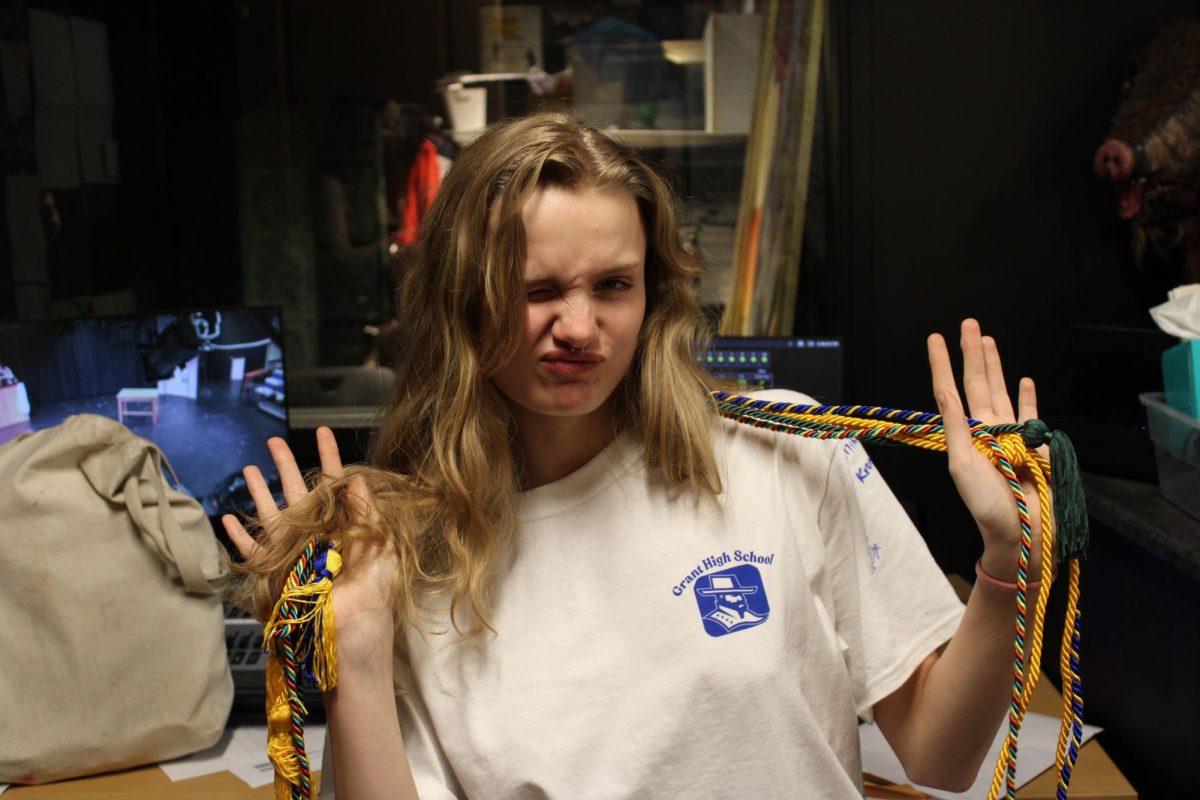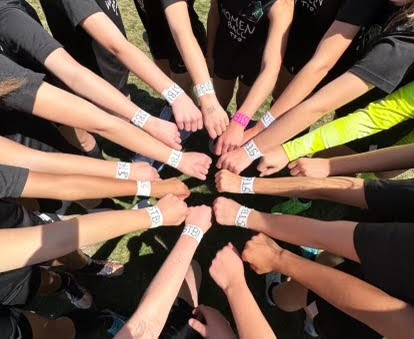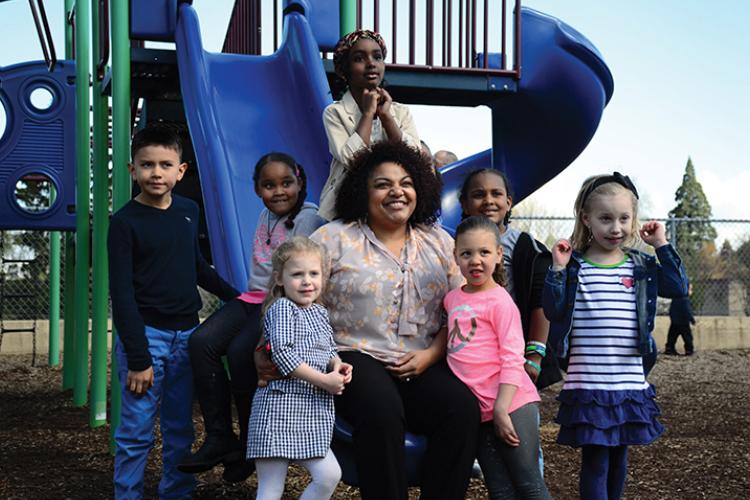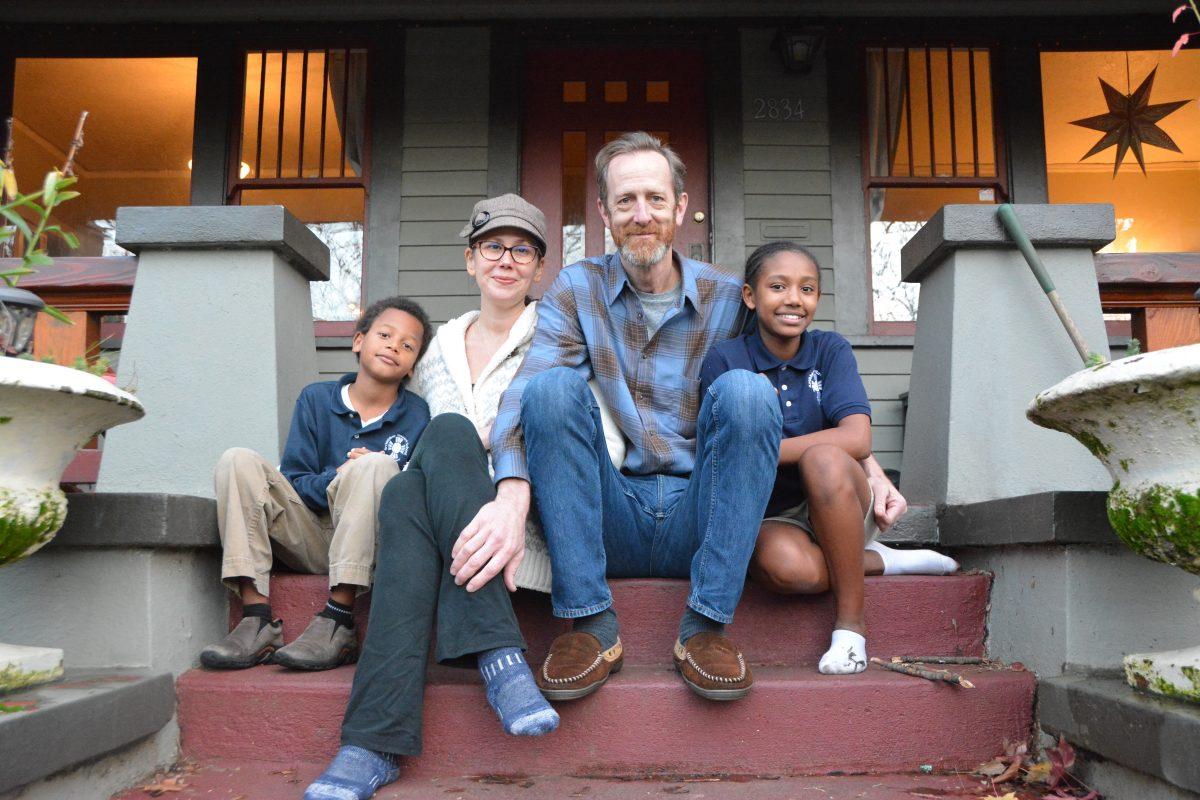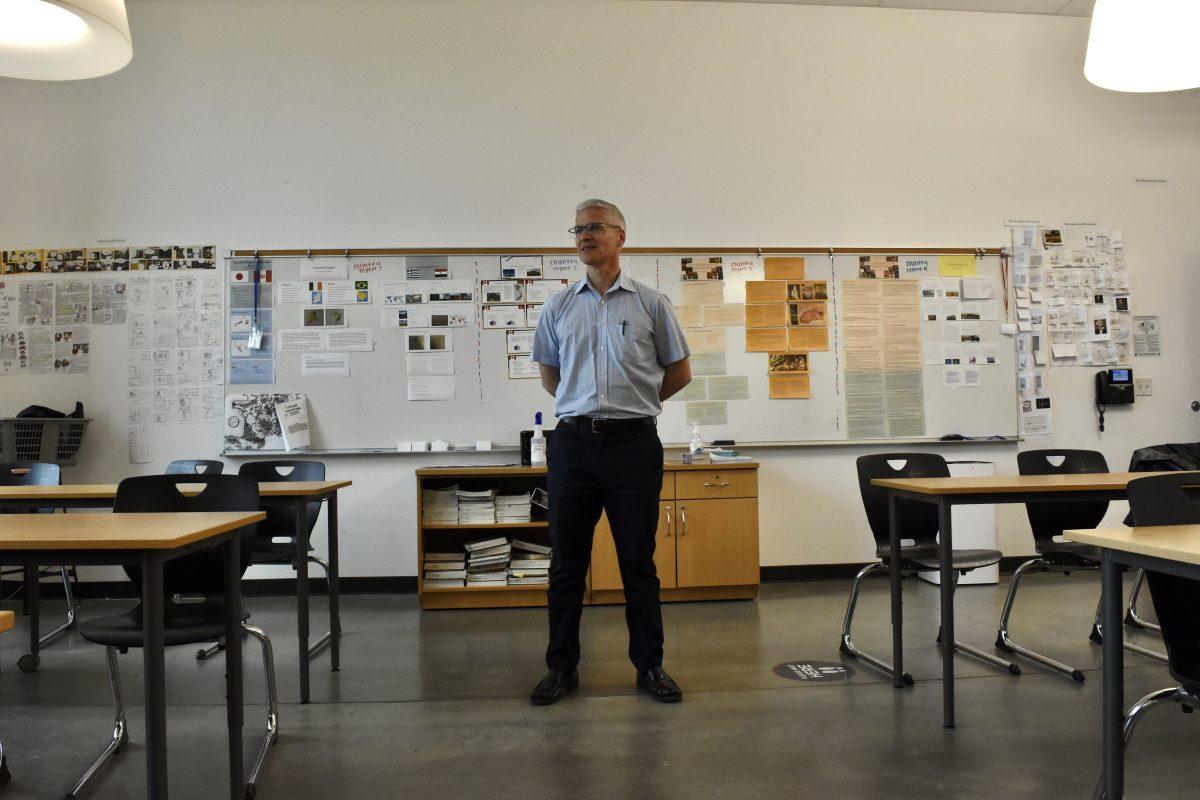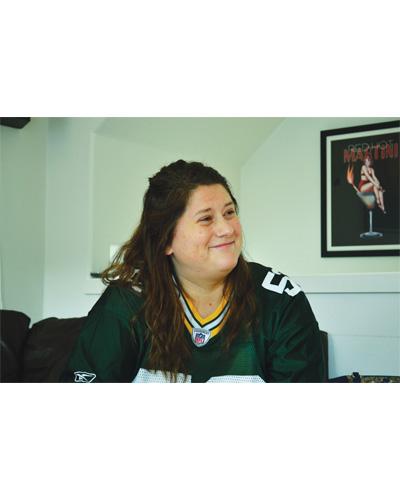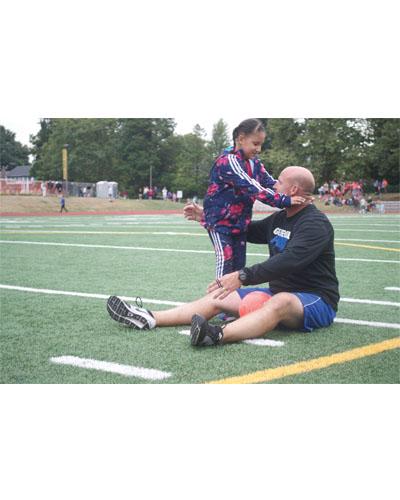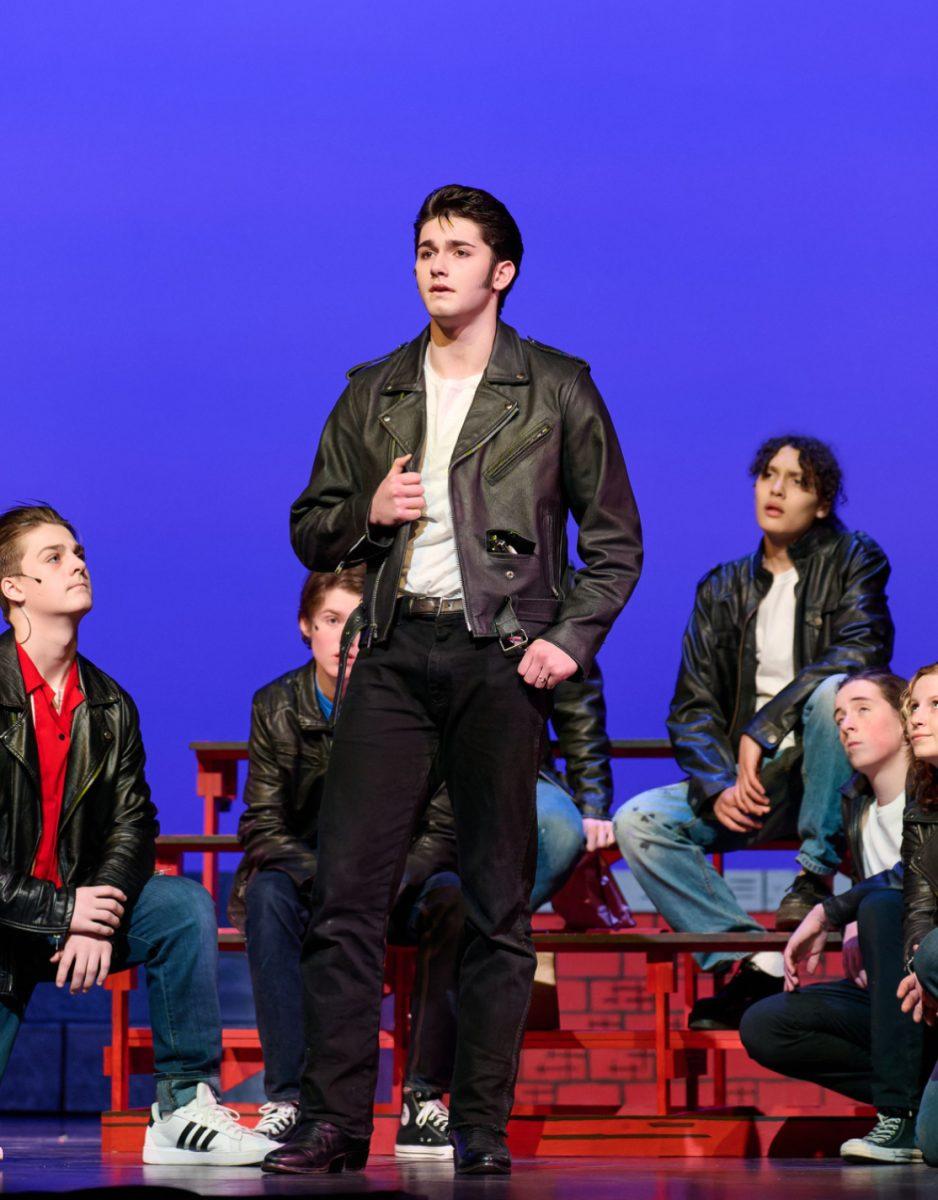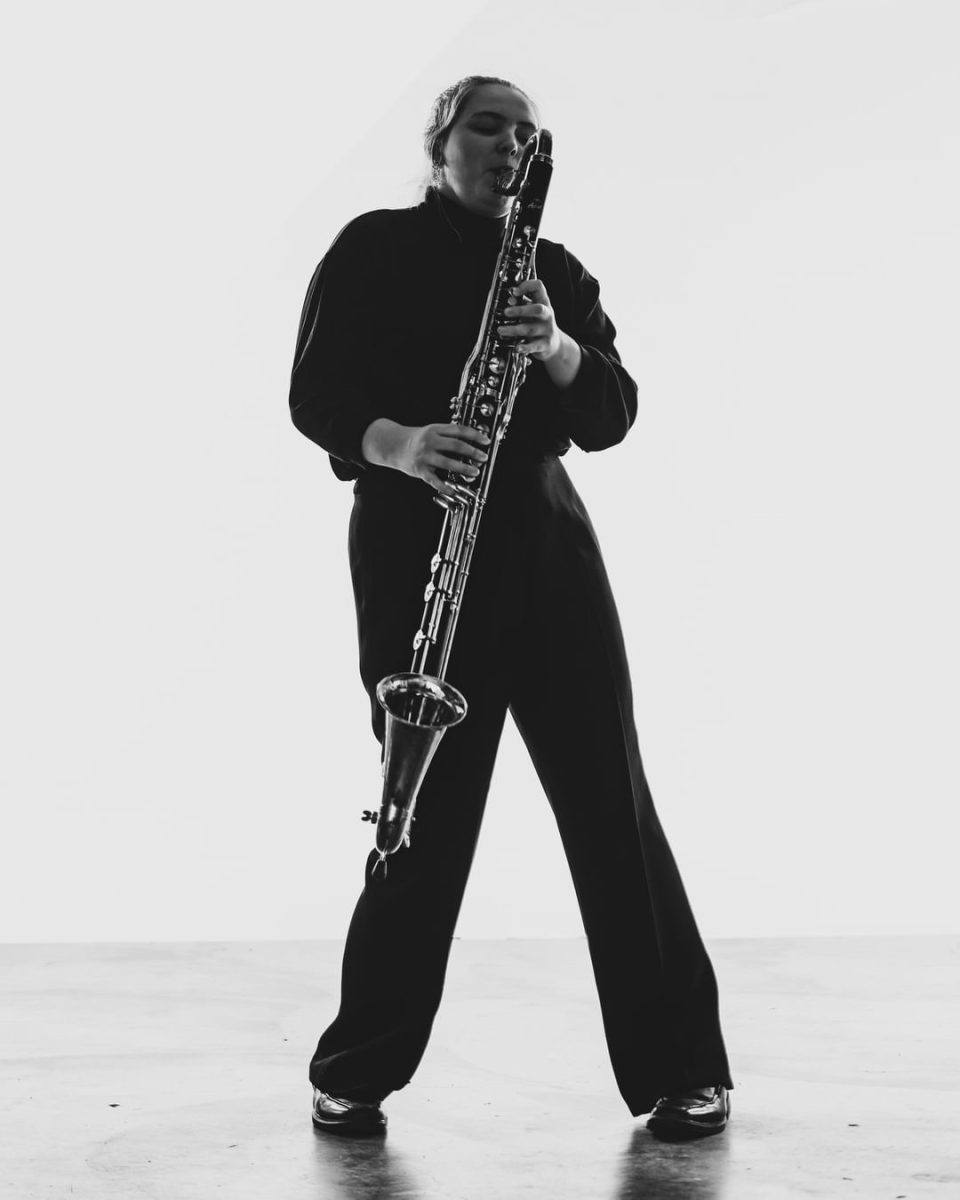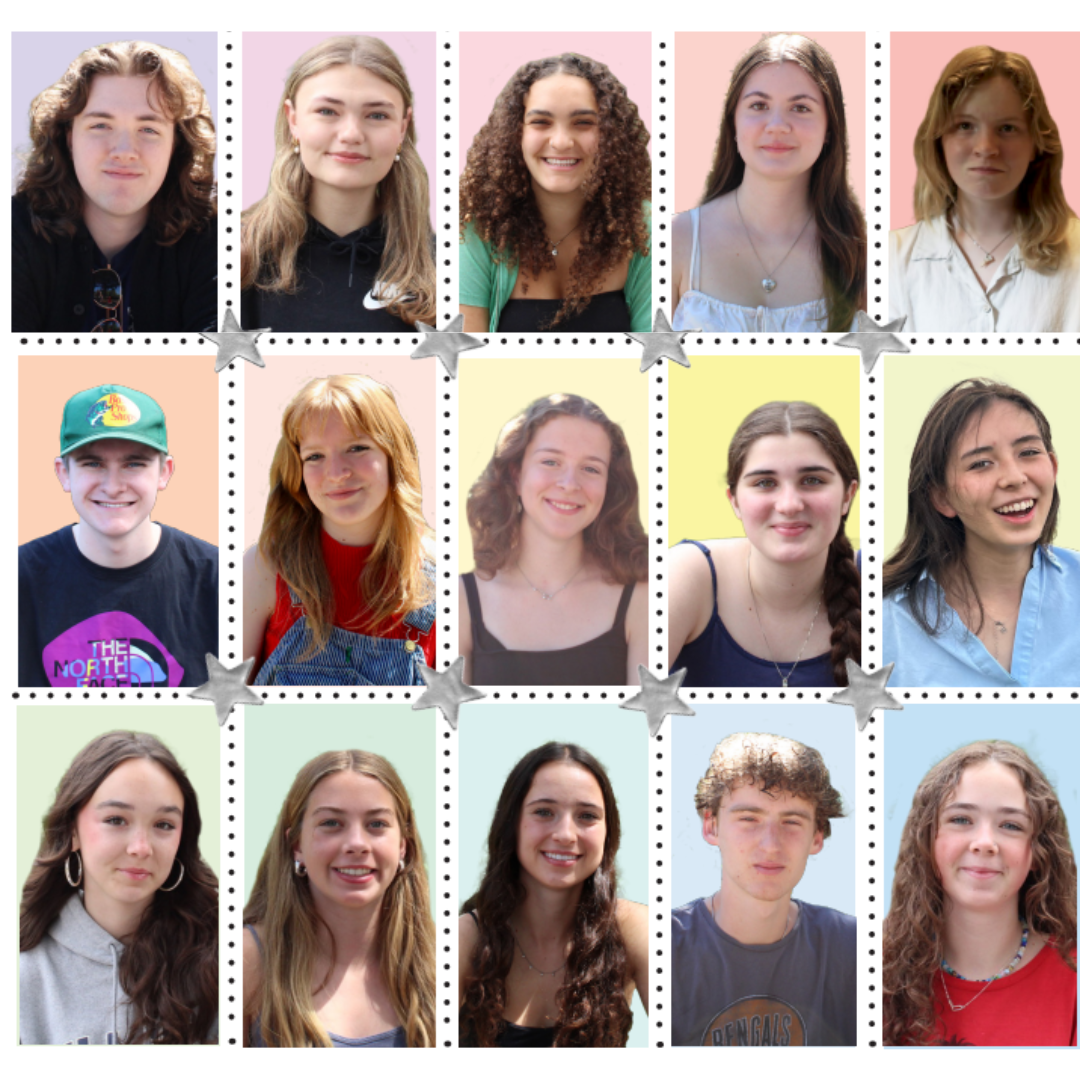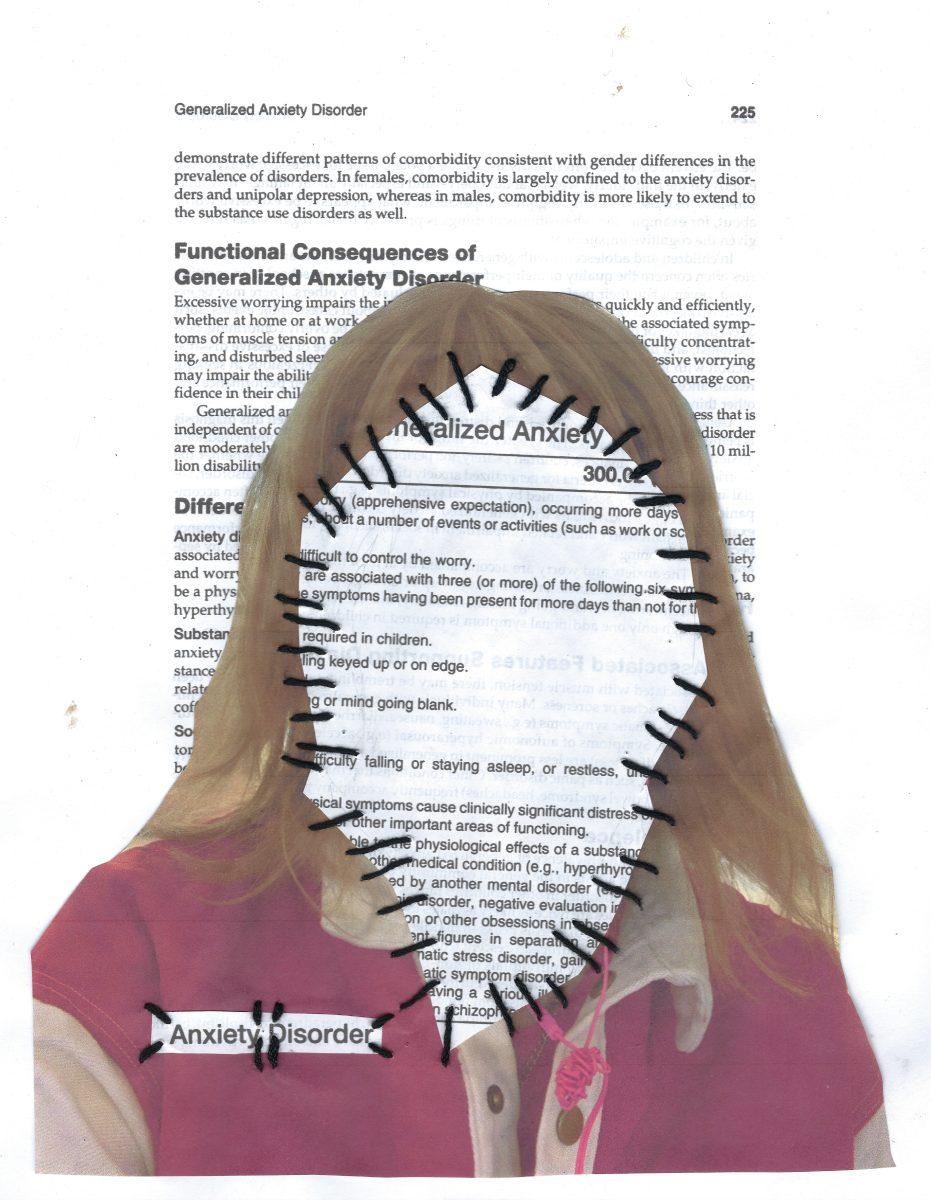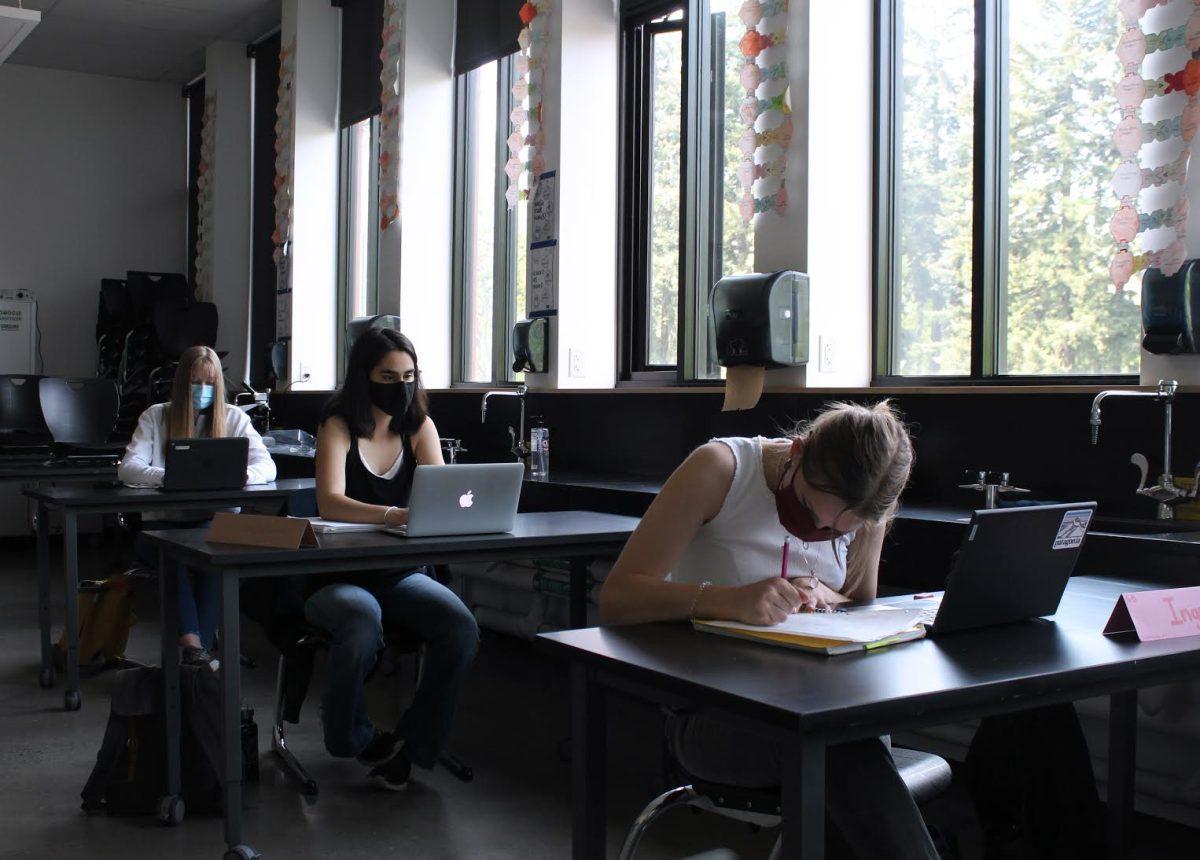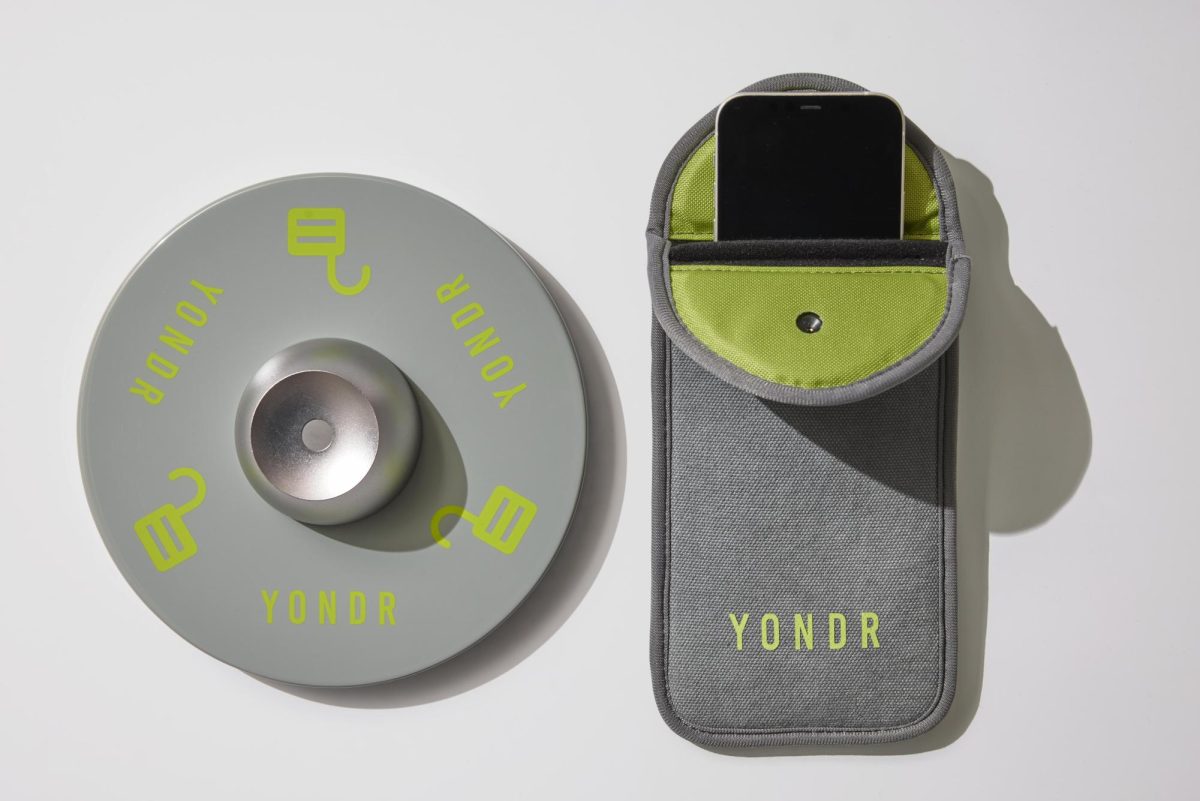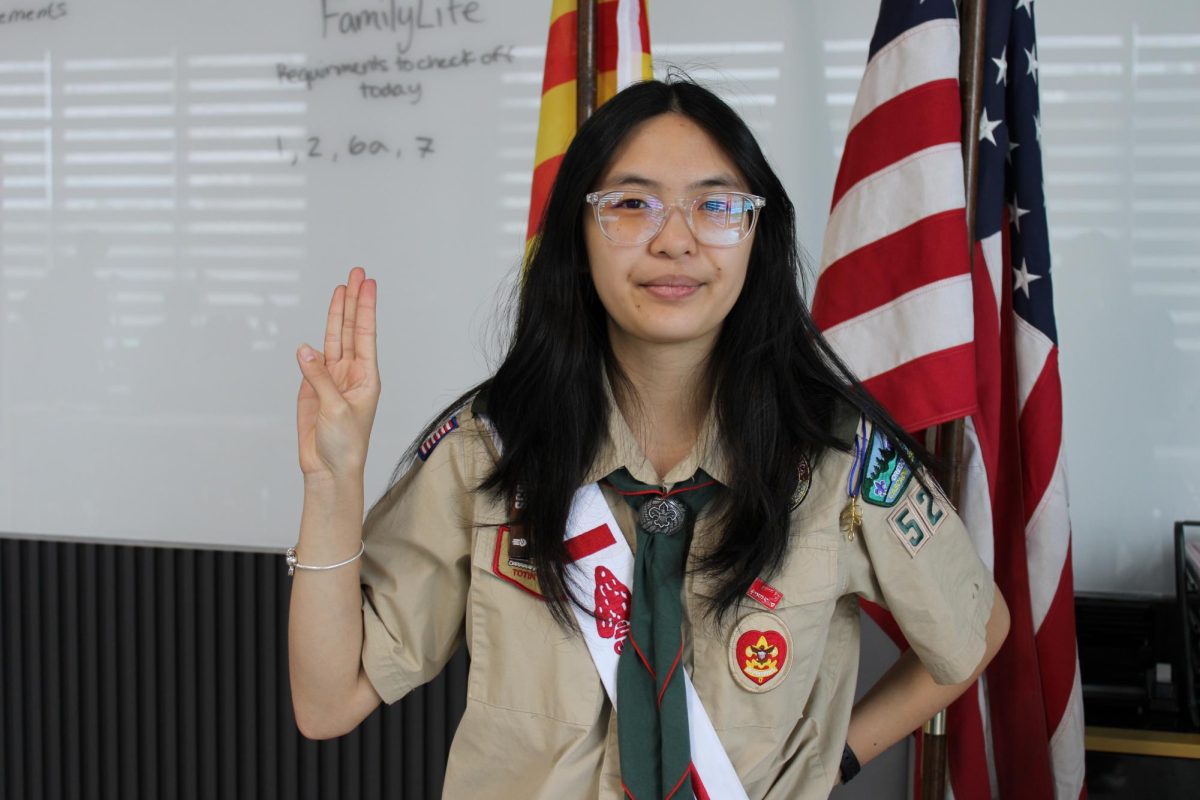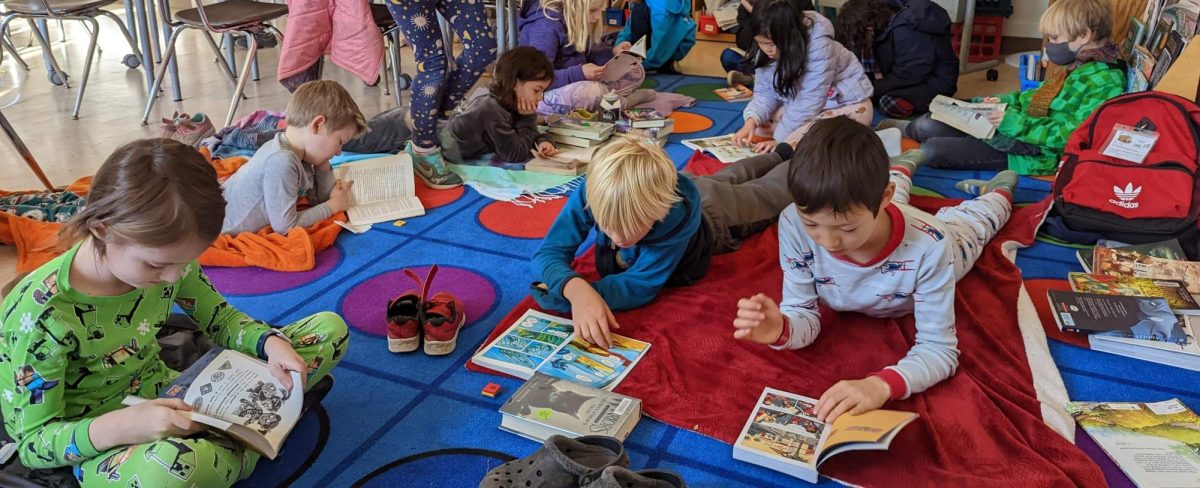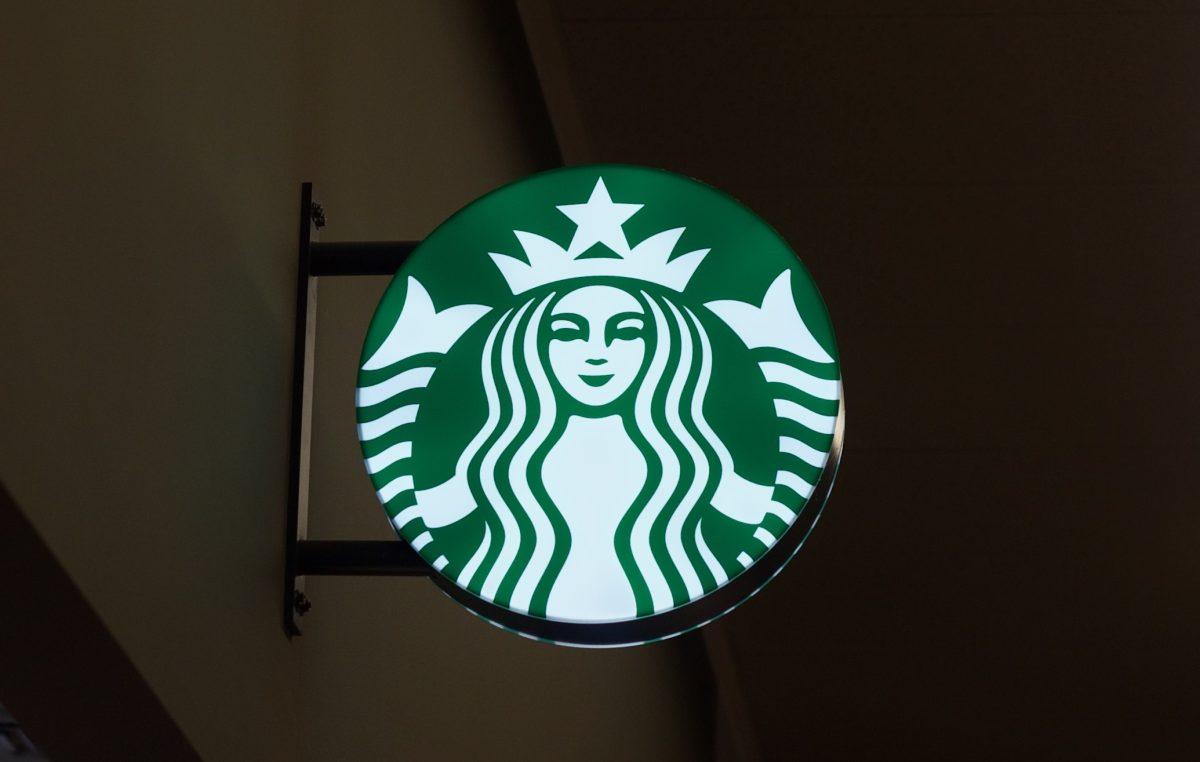On April 19, 2021, Grant High School students returned to the school building they left in March of last year as Grant rolled out its hybrid learning plan.
Following a recent agreement between the Portland Association of Teachers and PPS, schools are allowed to go back in-person in compliance with agreed upon safety measures, such as six-foot social distancing and air filters. The system provides students with in-person class time during regularly allotted asynchronous periods.
Many Grant parents and students are confident that in-person instruction is safe and beneficial for Grant students. “Just getting to meet my teachers and see my friends in school was something that I didn’t really notice that I missed so much over Covid learning,” says Grant sophomore Michaela McCollum.
However, some question hybrid learning’s safety, especially after an announcement from Principal McGee, sent April 23, just four days after the school reopened, explained that a student at school had tested positive for COVID-19. Grant admin plans to work with the Multnomah County Health Department and Education Service District to contact trace and keep others safe by temporarily transitioning the affected cohorts to Comprehensive Distance Learning until further notice.
“If they were to shut down the entire thing already, I’d be very disappointed,” says freshman Charlet Anderson. “That was a lot of effort … for one week just for everyone to go back.”
Over one year ago, Governor Kate Brown issued an order to shut down schools to reduce the spread of COVID-19. Since then, Grant classes have been held entirely over online softwares like Zoom and Google Meets to prevent the spread of the virus. But in early March, Brown signed an executive order mandating the reopening of all public schools by April 19.
Prior to the decision to reopen, groups of parents in Facebook groups dedicated to reopening schools argued whether reopening would be safe and help students. Some cited studies that highlighted the low risk of transmission of in-person learning such as a January study from researchers at Duke University that reported “schools can reopen safely if they develop and adhere to specific SARS-CoV-2 prevention policies.”
Educators and parents who advocated for a careful return to campus raised concerns over the value of going back to school for only 8 weeks and the disruption that could cause.
Some debate if the return to school is equitable. The schedules for both in-person and online instruction give students who opted for in-person the chance to connect with multiple teachers in classrooms for two days of the week from 1:05 to 3:45. Comprehensive Distance Learning students, by contrast, only get Wednesdays from 1:05 to 2:20, for asynchronous check-in time, which is an hour and twenty five minutes less.

Some students attending live classes say that this leaves students in online learning at a disadvantage. This could include students who live in multigenerational households who do not feel comfortable returning out of fear of bringing home the virus, students who live far away who aren’t able to make it to school in the one hour allotted for the commute, or students in families with multiple kids in school whose parents are not able to meet the demands of the various schedules.
“Students doing online only get asynchronous help from all their teachers on Wednesdays which seems a bit unfair to those kids,” says Lea Yonago, a freshman at Grant. “You can’t put one camp of kids in-person or online at a disadvantage. Many students have responsibilities at home or a relative who can’t afford the risk of students returning to school, and to somewhat neglect the kids who don’t have that choice to go defeats the point of in-person school altogether.”
Over the past month, PPS has worked closely with the teachers union and parent groups to find a plan that would address these concerns. “We had been in negotiations with the district since last summer about the terms of teaching in this pandemic and we came to a tentative agreement just before Spring break that was ratified,” says Portland Association of Teachers president Elizabeth Thiel. “It’s always been about making sure … that in-person instruction is safe and that it’s equitable.”
Thiel says that a lot of the bargaining has been centered around safety measures, a large priority for the PAT. “That was actually a thing you wouldn’t think you’d have to negotiate around, like cleanliness, but … it’s been a big issue because a lot of our schools haven’t had highly functional sinks or paper towels in the bathroom or soap in the bathroom on a regular basis, so that’s been really important.”
Grant and other PPS schools require masks, social distancing, and other safety measures. The school equips each classroom with hand sanitizer or cleansing wipes, and provides COVID-19 testing in safe spaces for symptomatic individuals.
Many teachers throughout the district are confident in the safety precautions being taken. Cleveland High School teacher Ami Fox says, “We had the strongest … return language (in the finalized hybrid learning plan), stronger than any other school district in the entire country.”
However, at Grant, students have noticed times when these protocols are inevitably hard to enforce. “They have us all separated … but then there’ll be times where you’re all mushed together in the hallways, (although) they can’t really control that.” says Anderson.
Mccollum noticed a similar issue when students were leaving the building. “When you’re coming in you have to go in a certain entrance based on your grade, but when you’re going out you could just walk out wherever so it’s a little bit more crowded. … It’s not as enforced,” she says.
“Is any system perfect? definitely not,” says choir teacher John Eisemann. “But, you know, as long as everybody follows the rules and really does self diagnosis … and they wear a mask and stay distanced. I think it’s going to be okay.”
In-person classes have been going on for one month and students are adjusting to the new schedule quickly. While plenty of students return for academic support, many are seeking the social aspect of school they lost during Comprehensive Distance Learning. But for many students, the community exposure they were hoping for just doesn’t feel the same.
“It’s not even the same kind of environment,” says junior Quinci King. “People are kind of just trying to get to where they need to go, so there’s no stop in the halls to chat unfortunately.”
However, for seniors who have spent the majority of their last year in comprehensive distance learning, in-person instruction gives them an opportunity to be with their classmates and teachers for the last few weeks of their high school experience. Some seniors are ready to step back into the building and see familiar faces again despite how different it is. “I just want some part of my senior year back,” says senior Sophie Gough.
Hybrid learning will be held until June 11th, the last day of school. While the district’s plans for the next school year are uncertain, many students are optimistic that the Portland metropolitan area can prevent the spread of COVID and that Grant will see a full return next year.
“For the most part, I think that everyone attending has been careful and has done a good job at protecting themselves and others,” says junior Okailey Afroso.“I feel confident that we can stop further spread of the virus at our school and hybrid learning has been going good so far, so I hope that we can see it get better next year.”




